Nestled within the cradling embrace of the majestic Mishmi Hills, Anini is a hidden gem in Arunachal Pradesh, often likened to the “Switzerland of the East.” Its landscapes are a vivid canvas of awe-inspiring beauty, with verdant valleys sprawled like emerald brushstrokes on nature’s canvas, pristine turquoise rivers revealing stories untold, and enchanting waterfalls cascading with ethereal grace. Anini’s ancient forests, veiled in mystery, serve as sanctuaries for rare and uncharted species, offering a haven for wildlife enthusiasts.
With each dawn and dusk, Anini unveils masterful paintings in the sky, orchestrating vivid spectacles of colors. This destination beckons adventurers and nature enthusiasts, inviting them to forge an intimate connection with the Earth. As you traverse this enchanting land, you become part of a vivid narrative, where the landscape is both storyteller and muse, leaving an indelible imprint on your spirit. Anini promises to mesmerize and inspire, a haven for those who cherish the beauty of the natural world.
The Verdant Valleys of Anini: A Slice of Switzerland in India
As you make your way to Anini, the first thing that strikes you is the sheer expanse of lush green valleys that stretch as far as the eye can see. Imagine rolling hills covered in a carpet of emerald, dotted with vibrant wildflowers that sway in the gentle breeze. The air is crisp and invigorating, and you can’t help but take deep breaths to savor the pure oxygen that this pristine landscape provides.
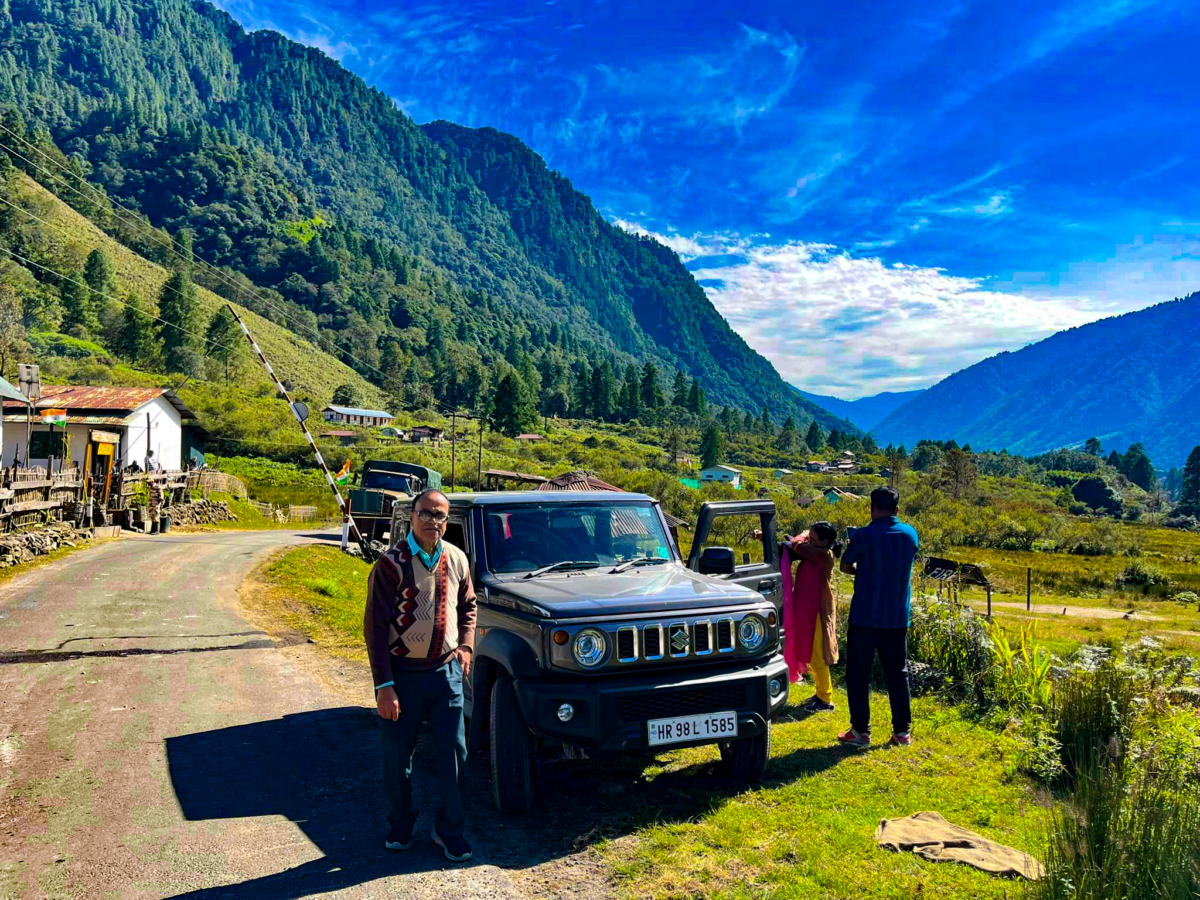
The Mishmi Hills that overlook the town of Anini add a touch of grandeur to the scenery. These majestic hills are covered in thick forests that are home to a diverse range of flora and fauna. The evergreen forests are like a natural tapestry, with shades of green that change with the seasons. In the spring, rhododendrons burst into bloom, painting the hillsides in shades of red and pink, reminiscent of Switzerland’s famous alpine meadows.
The Turquoise Jewel: Dri River
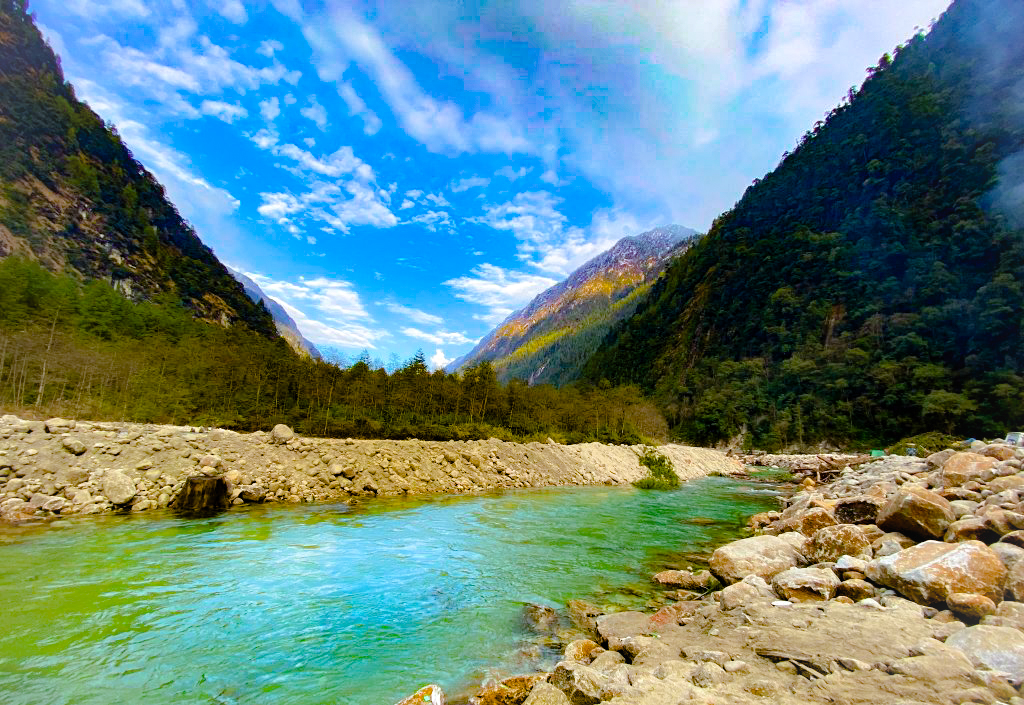
Dri or Dree River, Anini Dibang valley
One of the standout features of Anini’s landscape is the mesmerizing Dri River. The river’s turquoise waters wind their way through the valleys, creating a stunning contrast against the green surroundings. The Dri River is not just a visual treat; it also holds cultural significance for the local Idu Mishmi people, who have lived in harmony with these waters for generations.
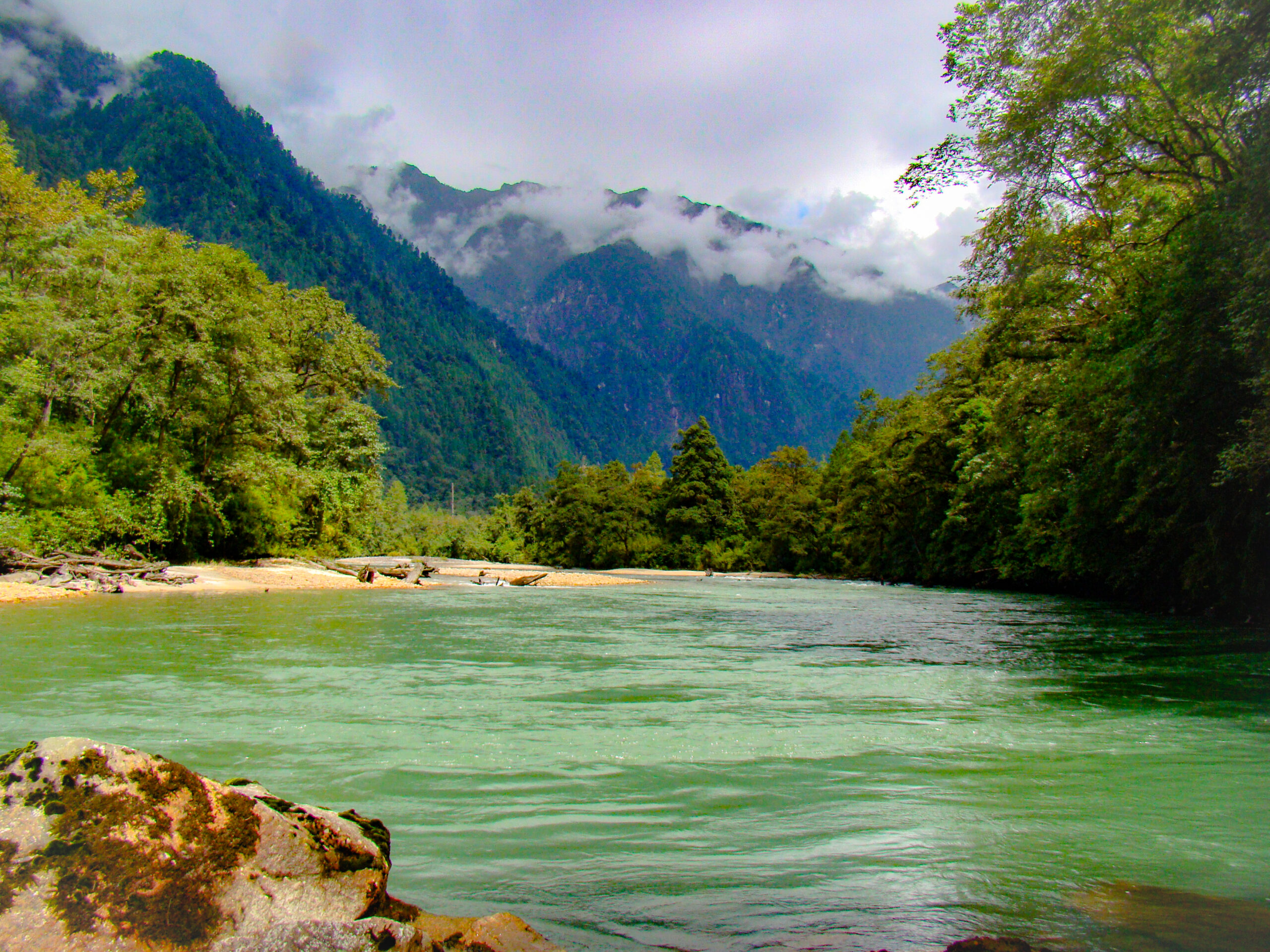
Imagine standing on the riverbank, the cool breeze ruffling your hair as you gaze at the turquoise expanse. You might even see local fishermen in traditional attire casting their nets, adding a touch of tradition to the scene. The Dri River is not just a body of water; it’s a lifeline for the people of Anini, providing sustenance and a connection to nature that is deeply cherished.
Nature’s Symphony: Cascading Waterfalls
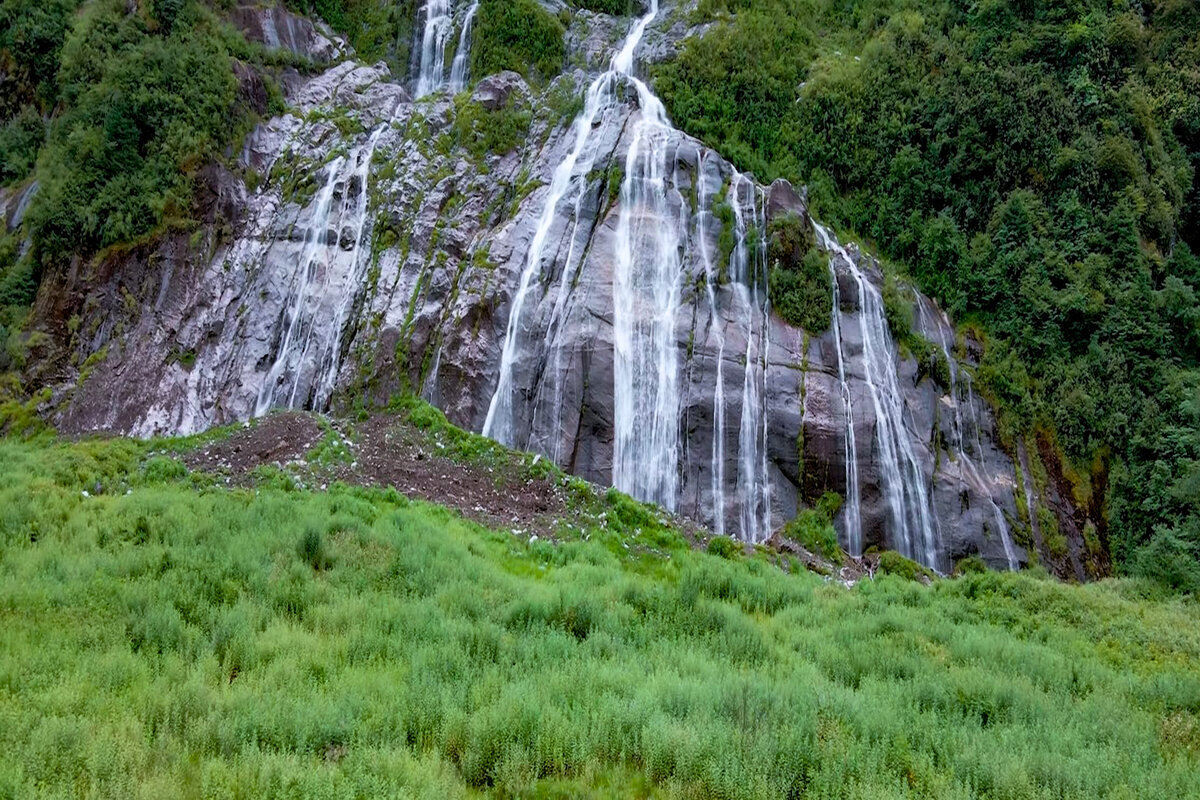
Anini is a land of waterfalls, and each one is more enchanting than the last. Imagine hiking through dense forests, the earthy scent of moss and leaves underfoot, as you make your way to one of these cascading wonders. The sound of rushing water grows louder with every step, building anticipation for the vi
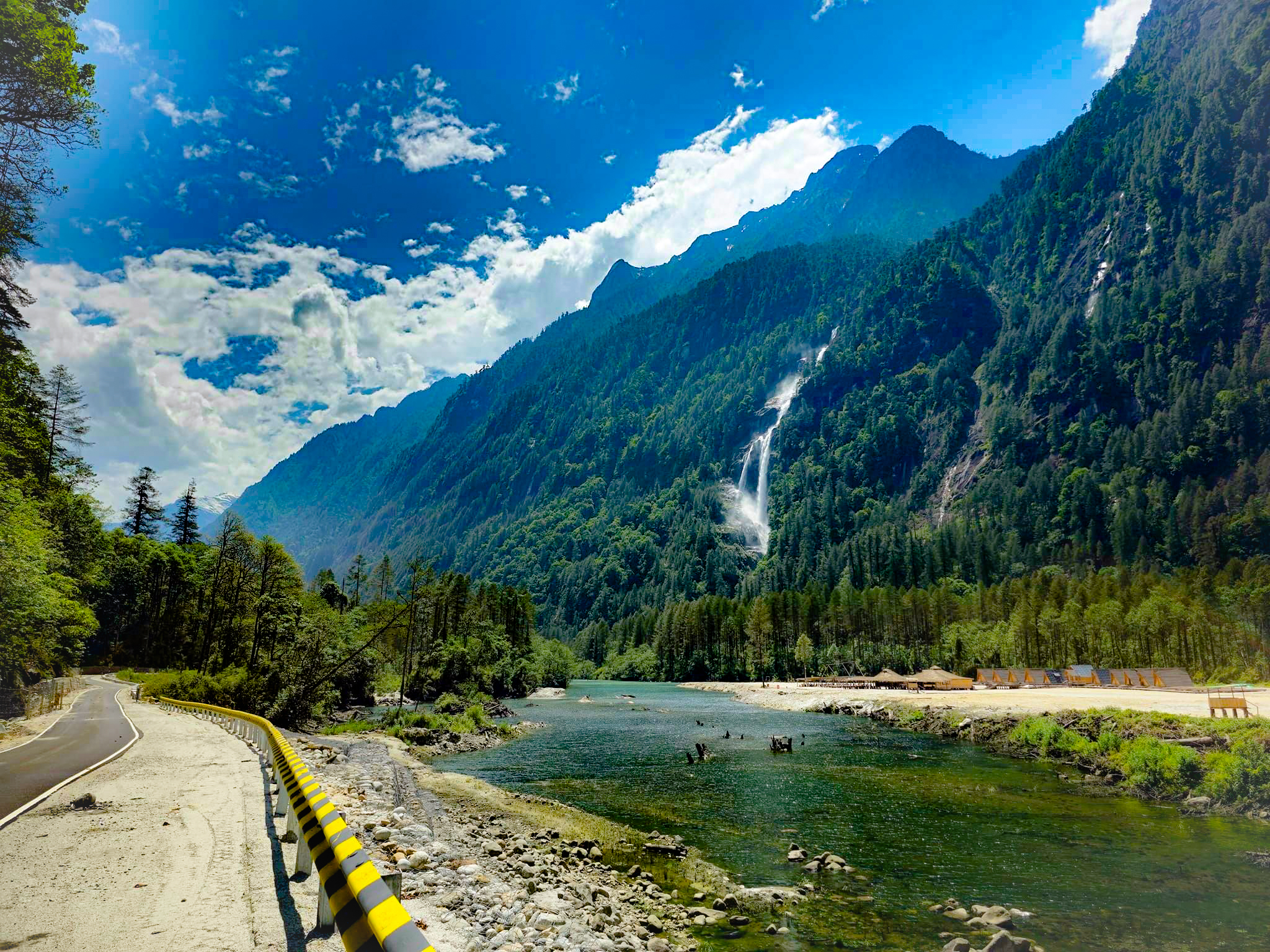
One of the most picturesque waterfalls in Anini is the Dri Falls, where the Dri River gracefully tumbles over rocks, creating a mesmerizing spectacle. The water sparkles like diamonds in the sunlight, and the misty spray that surrounds the falls is like nature’s own cooling system.
If conditions permit, you might even have the opportunity to take a refreshing dip in the natural pools at the base of the falls. Picture yourself immersed in the crystal-clear waters, surrounded by the lush greenery of the forest—a moment of pure bliss.
Beyond the Forest Cover: The Magical Valley
Beyond the dense forest cover that blankets the hills, Anini opens up into a valley that feels straight out of a fairy tale. Imagine emerging from the shadows of the trees into a vast, sun-drenched meadow. The ground beneath your feet is soft and inviting, covered in a carpet of wildflowers that sway in the breeze.
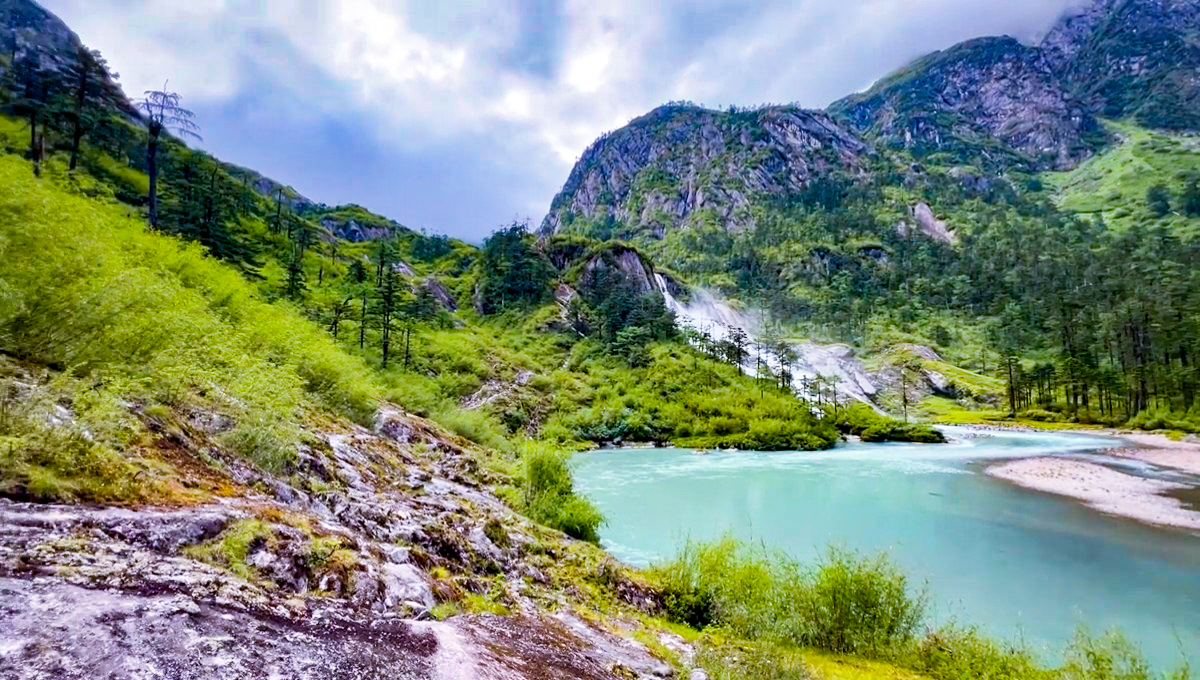
In the distance, you can see the valley stretching out before you, with the Mishmi Hills framing the scene like a natural amphitheater. The hills are dressed in shades of green and brown, and as the sun sets, they take on a golden hue that is simply breathtaking.
Marshy Meadows and Swampy Grasslands
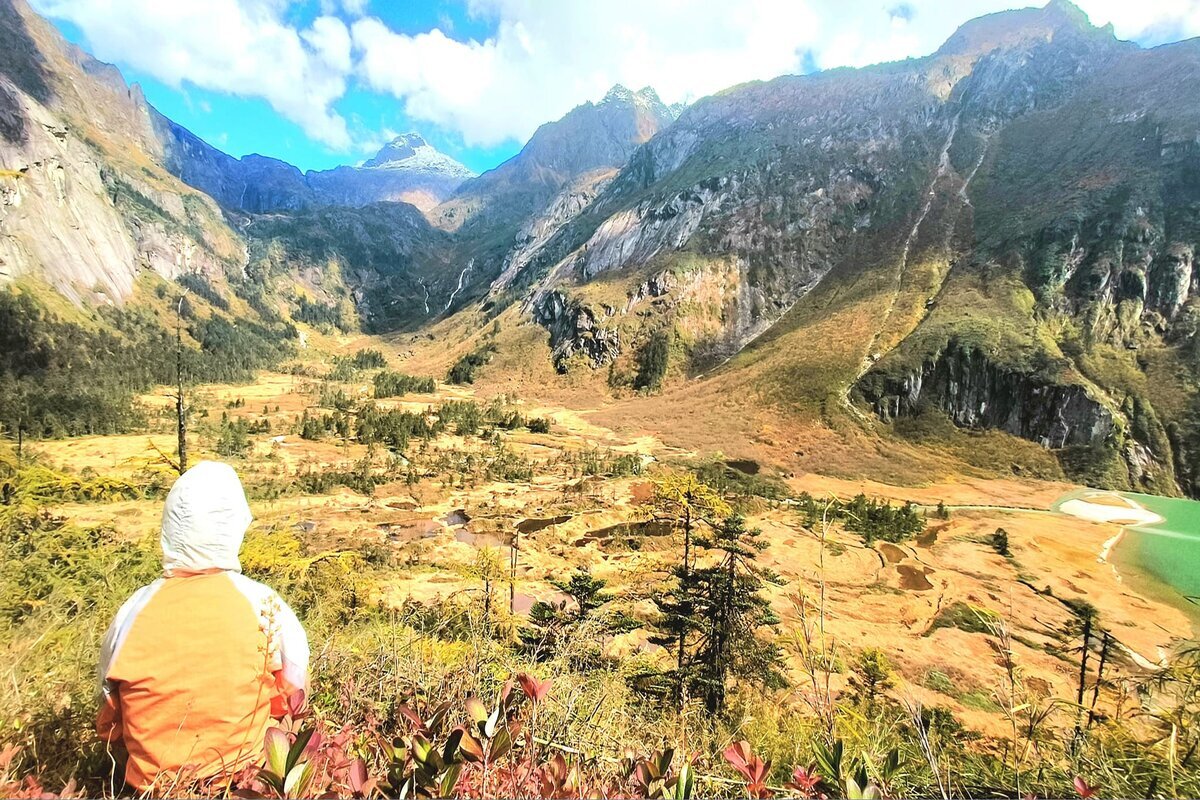
As you continue to explore Anini, you’ll come across marshy meadows and swampy grasslands that are unlike anything you’ve ever seen. Imagine walking on a path that leads you through knee-high grasses that sway in the wind. The ground beneath your feet is soft and squishy, and you can hear the gentle gurgle of hidden streams as you make your way through this unique landscape.
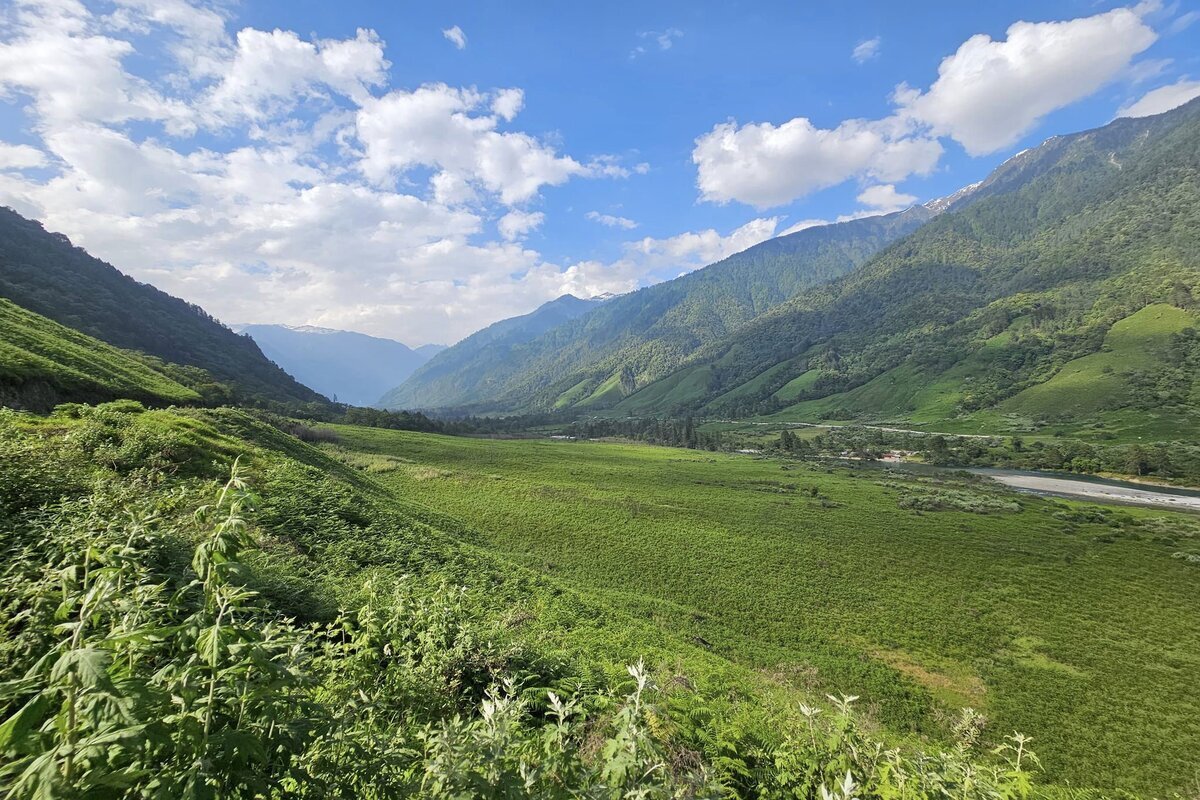
These grasslands are not just beautiful; they are also teeming with wildlife. Keep your eyes peeled for a variety of bird species, butterflies, and maybe even the elusive Mishmi takin, a goat-antelope native to the region. The grasslands of Anini are a testament to the area’s rich biodiversity and offer a sense of serenity that is hard to find in the hustle and bustle of modern life.
Anini to Bruni Camp – Drive through the Riverine Forests of Dri River Valley
Experience the Enchanting Journey from Anini to Bruni Camp along the ICBR Road, tracing the Riverine Forests of Dri River Valley.
Visit the Alinye Village to enjoy the majestic views of deep valleys amidst the forested Mishmi Hills and snow capped mountain tops. This is the place from where the ICBR road from Anini towards the Indo-Tibet Border enters a comparatively narrower gorge guarded by steep forested hills with waterfalls jumping into the river. From here the Canvas of Waterfalls starts as you will find a series of waterfalls on both side of the Dri River.
Explore the quaint villages of Acheso or Dambuen, where a bamboo and rope hanging footbridge awaits for a unique river crossing experience. Discover the serene beauty of Dree Arfa Campsite, nestled amidst emerald-hued Dri River and lush grass hills bordered by tropical conifer forests.
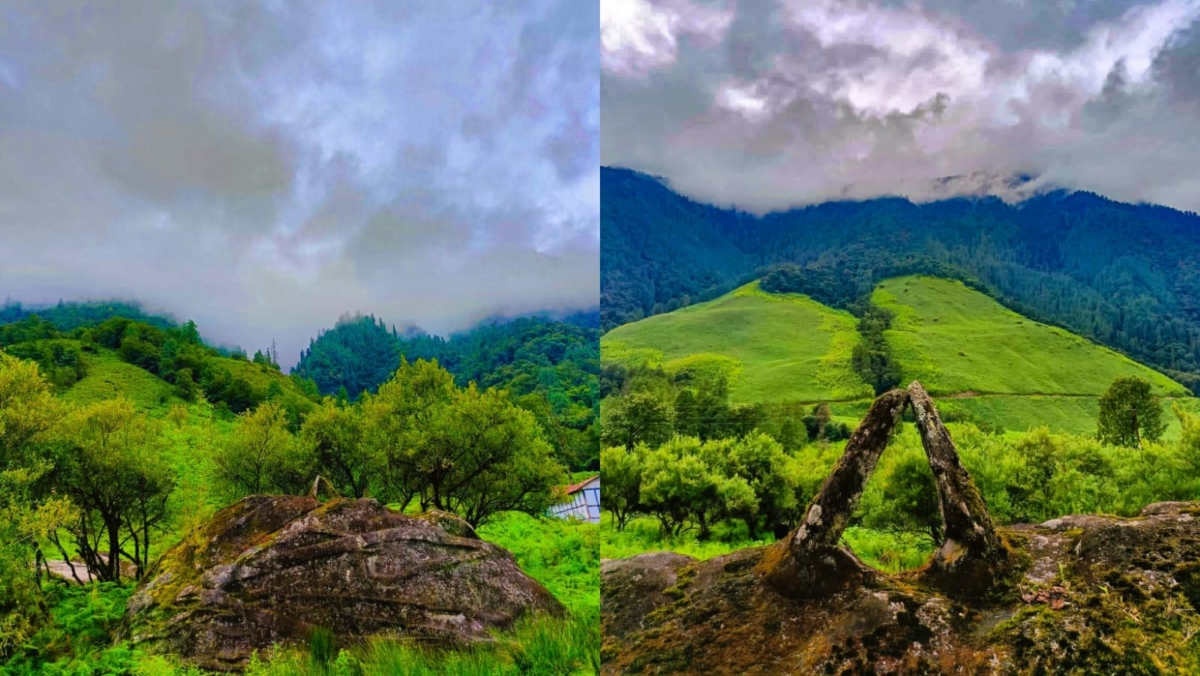
Don’t miss the revered Isiya-Abrayi Tothroko, a sacred heritage site in Acheso village, where an evergreen bamboo stands tall atop a monumental boulder, symbolizing centuries of Idu Mishmi traditions and rituals.
The core belief associated with Isiya-Abrayi Tothroko revolves around the evergreen bamboo plant growing atop a sizable boulder. It’s believed that this bamboo sprouted from the practice of Isiya-Abrayi, who, after performing rituals in various places or villages, would plant or insert bamboo twigs into the ground upon returning. Over time, these rituals have led to the growth of a full-sized bamboo plant, about 6-7 feet in height, adorning the monumental boulder, which stands at a remarkable height of 12-13 feet and spans around 30-35 feet in breadth.
Visit the villages of Angrim or Angri Valley like Gipulin that provide a glimpse into the rich culture and traditions of the Idu Mishmi people. As you wander through these villages, you’ll come across traditional hunting artifacts, and the locals will regale you with fascinating tales of their way of life. It’s a chance to immerse yourself in a world that is far removed from the hustle and bustle of modernity.
The Enigmatic Seven Lakes Trek in Mathu Valley
For those seeking adventure, Anini offers the opportunity to embark on the unforgettable Seven Lakes Trek. Spread across eight days, this trek takes you through a variety of landscapes, from grasslands to rainforests to rocky mountains. The highlight of the trek is, of course, the seven turquoise blue alpine lakes that are scattered along the route.
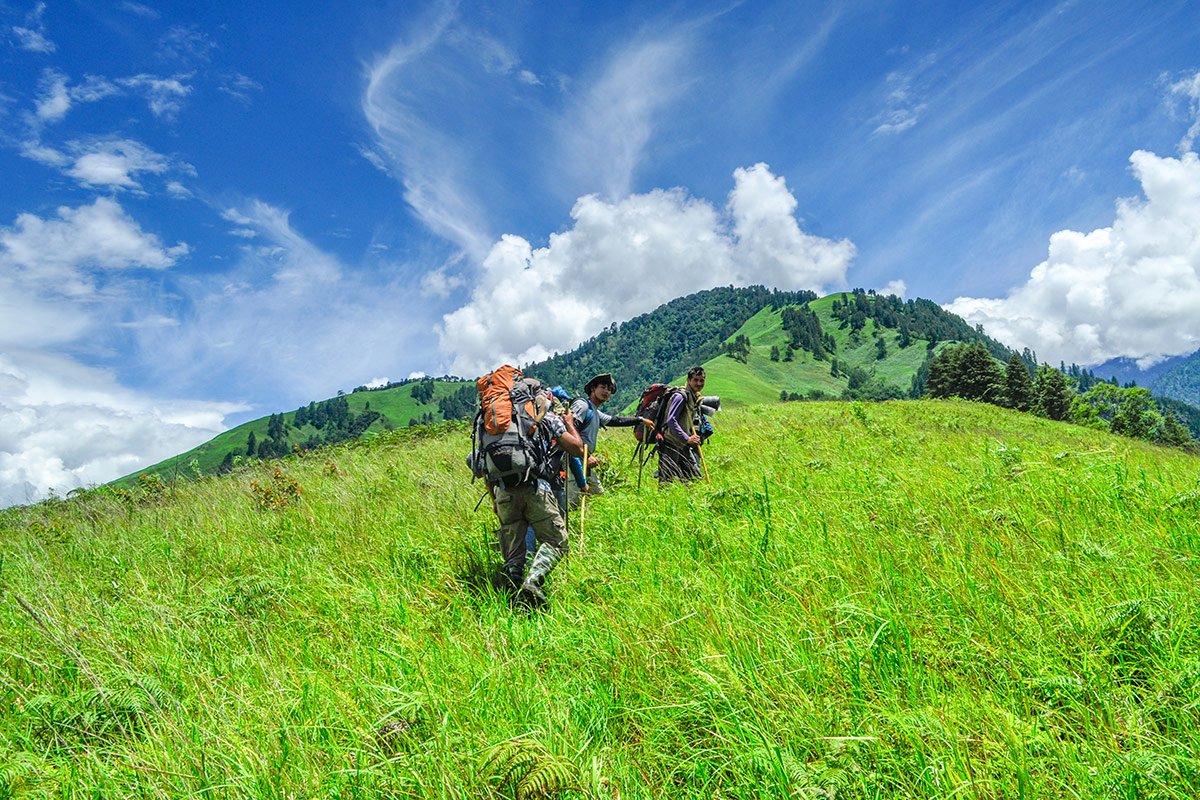
Think of waking up to the crisp mountain air, surrounded by the beauty of the Mishmi Hills. Each day brings a new adventure as you hike through dense forests, cross gushing streams, and ascend rocky slopes. The turquoise lakes shimmer like jewels in the landscape, reflecting the clear blue skies above.
This trek is not for the faint of heart, but the rewards are immeasurable. As you reach each lake, you can’t help but be awestruck by the natural beauty that surrounds you. It’s a journey that will test your limits and leave you with memories that will last a lifetime.
Exploring Villages of Mathu Valley: The Valley of Rolling Grass Hills
As you venture beyond Anini, you’ll have the opportunity to explore remote villages nestled in the rolling grass hills of Mathu Valley like Maro, Maronli, Emuli, Brango and Mipi. Imagine trekking through the hills, the landscape changing as you ascend higher. Suddenly, you catch sight of Mipi village nestled in the valley below, smoke rising from the traditional longhouses.
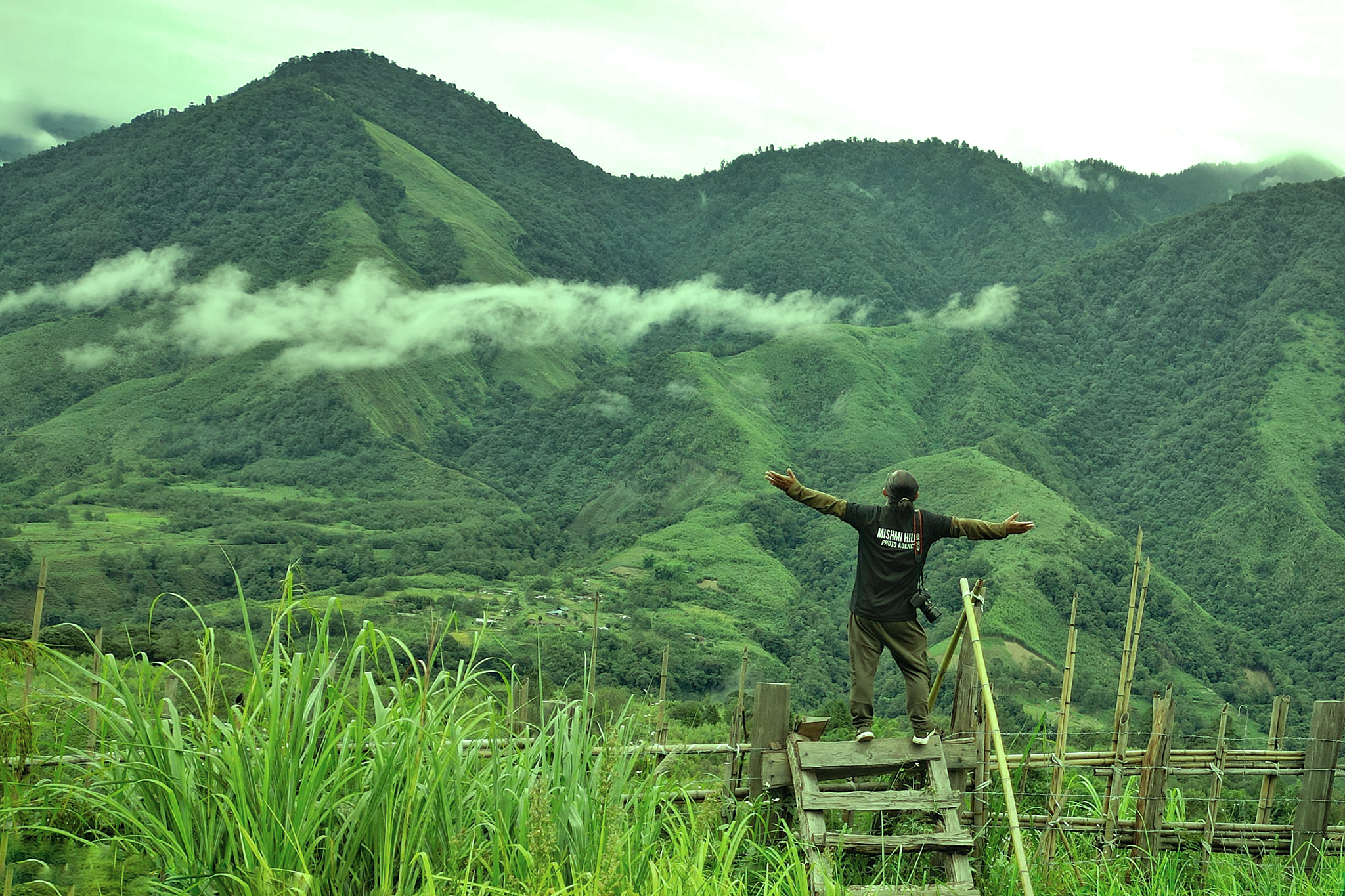
Anini and the Ever-Changing Seasons
Anini, the gateway to the Dibang Valley Wildlife Sanctuary, experiences a dramatic transformation of its landscapes throughout the year, each season painting a unique masterpiece. Understanding these seasons is essential for travelers seeking to uncover the true essence of this remote paradise.
Spring: March to May
As spring unfolds across Anini and the Dibang Valley, the region undergoes a remarkable transformation. The months of March to May herald the awakening of nature, with temperatures gradually warming up. During this season, the landscape is adorned with the vibrant colors of rhododendron blooms, creating a scene reminiscent of Switzerland’s alpine meadows. The hillsides burst into shades of red and pink, and the entire region comes to life with the promise of a new beginning.
Summer: June to August
Summer in Anini and the Dibang Valley is a time of lush abundance. The landscape is covered in a thick blanket of greenery, and the meadows are punctuated by the lively dances of wildflowers. Temperatures during the daytime range from a pleasant 20°C to 25°C, while nighttime temperatures hover between 7°C and 13°C. This season is a paradise for nature enthusiasts, offering clear, rainy days with occasional fog. Streams flow with vigor, and the region’s natural beauty is at its peak.
Monsoon Transition to Autumn: September to Mid-October
The transition from monsoon to autumn marks a significant change in the Dibang Valley’s landscape. The monsoon rains have subsided, leaving behind landscapes that are lush and green. These months are ideal for those who prefer less crowded trails and clear mountain views. September is particularly enchanting as it marks the onset of autumn, when the forests and hillsides transform into a tapestry of breathtaking colors. During this period, daytime temperatures range from 15°C to 20°C, while nighttime temperatures drop to 2°C to 5°C.
Late Autumn: October-End to Third Week of November
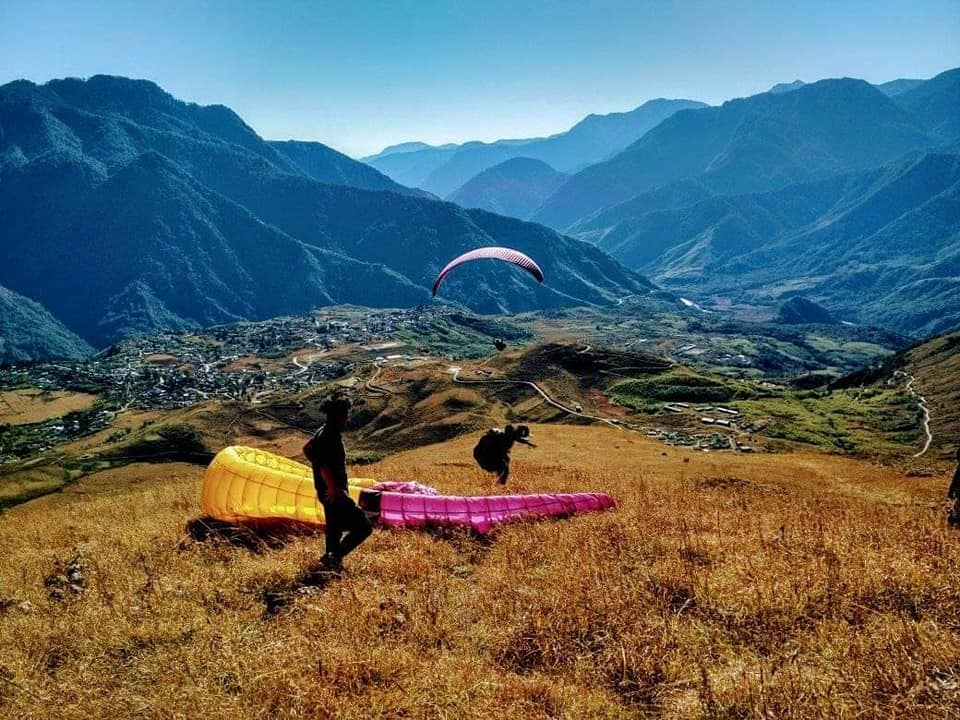
October-end ushers in colder weather in Anini and the Dibang Valley. Rainfall becomes a distant memory, and clear blue skies dominate the landscape. The mountains and valleys are bathed in brilliant hues, and the reflection of the skies deepens the blue of the alpine lakes. However, it’s essential to be well-prepared with appropriate gear and clothing as snowfall can be expected during the second week of October, although it typically subsides after a few days. Nighttime temperatures dip between 0°C and 5°C, while daytime temperatures range from 14°C to 18°C.
Winter in Anini: Late November to February
Winter in Anini and the Dibang Valley, spanning from late November to February, offers a magical transformation as the landscape is cloaked in a serene blanket of snow. The region’s tranquility is palpable, with temperatures ranging from -5°C to 10°C during the day, plummeting to -15°C or lower at night. The hills, valleys, and forests become a captivating snow-covered wonderland, and the quietude is a paradise for those who relish winter’s solitude. Whether you’re enchanted by the soft, powdery snow, the glistening ice formations, or the peaceful stillness, winter deepens the allure of this remote paradise. Prepare with warm clothing and gear for an unforgettable winter adventure in Anini.
Each season in Anini brings its unique charm and showcases the region’s diverse landscapes. Whether you’re captivated by the vibrant rhododendrons of spring, the lush meadows of summer, the vivid autumn colors, or the pristine winter landscapes, Anini and the Dibang Valley have something to offer all year round. So, choose the season that resonates with your soul, pack your bags, and embark on a journey through this ever-changing and enchanting land.
Getting to Anini: A Journey Worth the Effort
Reaching Anini was once a daunting task, with treacherous roads, landslides, and blockages. However, in recent years, it has become more convenient to travel to this remote paradise. Here are some options for reaching Anini:
By Air: The nearest airport is Dibrugarh, from which you can take a bus or taxi to Roing and then onwards to Anini.
By Road: There are direct overnight buses from Guwahati to Roing. Alternatively, you can take a train or bus to Dibrugarh/ Tinsukia and then a bus to Roing. Shared cabs are also available from Roing to Anini, but it’s advisable to book in advance.
Entry Formalities
Indian Tourists
- eILP for Indian Citizens: The eILP is applicable for Indian citizens only. Indian citizens visiting Arunachal Pradesh need to obtain this permit to enter certain restricted areas in the state. https://eilp.arunachal.gov.in/preTuristEIlpKYC
- Tourist eILP Duration: The tourist eILP is valid for a stay of up to 14 days. This permit is suitable for tourists who plan to stay in Arunachal Pradesh for a shorter duration.
- Provisional ILP for Longer Stays: If tourists plan to stay beyond 14 days, they may apply for a provisional ILP. This allows for extended stays in the state.
- Age Requirement: Individual eILP is not required for travelers below 14 years of age. However, they must be accompanied by an adult.
- Verification of Information: All information provided in the eILP application is subject to verification. Providing wrong or misleading information can lead to penal action.
ILP Application Offices:
- Delhi: The Resident Commissioner, Govt. of Arunachal Pradesh, Kautilya Marg, Chanakyapuri, New Delhi. Contact: 011-23013915/23013956
- Kolkata: The Deputy Resident Commissioner, Govt. of Arunachal Pradesh, CE-109, Sector-1, Salt Lake City, Kolkata. Contact: 033-23341243/23589865
- Guwahati: The Deputy Resident Commissioner, Govt. of Arunachal Pradesh, GS Road, Rukminigaon opposite Manasa Mandir, Dispur, Guwahati – 781021. Contact: 0361-2412859/2416720/2412859
- Shillong: The Deputy Resident Commissioner, Govt. of Arunachal Pradesh, Meghalaya, Shillong. Contact: 0364-2224247/2224476
- Tezpur: The Deputy Resident Commissioner, Govt. of Arunachal Pradesh, Parvati Nagar, Tezpur, Assam. Contact: 03712-260173
- Dibrugarh: The Deputy Resident Commissioner, Govt. of Arunachal Pradesh, Mohanbari, Dibrugarh, Assam. Contact: 0373-2382560/2382738
- North Lakhimpur: The Deputy Resident Commissioner, Govt. of Arunachal Pradesh, Lilabari, North Lakhimpur, Assam. Contact: 03752-22186
- Jorhat: The Deputy Resident Commissioner, Govt. of Arunachal Pradesh, Jorhat, Assam. Contact: 0376-2340173
ILP On Arrival:
Tourist ILP facilitation centers are available at various locations, including:
- Naharlagun railway station
- Gumto railway station
- Guwahati: Assam Paryatan Bhawan near Nepali Nandir and Guwahati LGBI Airport
- Itanagar: Donyi Polo Airport
These centers provide additional options for travelers to obtain their ILPs upon arrival, making the process more convenient for those planning to visit Arunachal Pradesh. Please ensure that you have all the necessary documents and fees when applying for your ILP. Keep in mind that requirements and procedures may change over time, so it’s advisable to check for the most up-to-date information before your visit.
Foreign Nationals
To enter India, foreign travelers typically need to obtain an Indian tourist visa from an Indian embassy or consulate in their home country. The specific visa requirements can vary depending on your nationality, so it’s essential to check with the nearest Indian embassy or consulate for the latest visa regulations.
- Group Requirement: Foreign tourists are required to travel in a group of two or more persons to obtain the PAP.
- Online Application: Foreign tourists can apply for the PAP online through the official website of the Indian Bureau of Immigration. The website link provided is https://indianfrro.gov.in/eservices/home.jsp. You can initiate the application process on this platform.
- Physical Application: Alternatively, you can also apply for the PAP physically at designated government offices in New Delhi, including:
- Govt. of India, Ministry of Home Affairs, New Delhi
- The Resident Commissioner, Govt. of Arunachal Pradesh, Kautilya Marg, Chanakyapuri, New Delhi. Phone: 011-230113915/23013956/26880901
- Local Application: Applications for the PAP can also be made through approved local tour operators. These tour operators will assist you in completing the required formalities.
- Royalty Fee: Foreign tourists visiting Arunachal Pradesh are typically required to pay a royalty fee of USD 50 per head to the Government of Arunachal Pradesh. This fee is collected to support the region’s tourism infrastructure and preservation efforts.
- Authorized Authorities: The Secretary (Tourism) and the Commissioner (Home) in the government of Arunachal Pradesh, Itanagar, can also provide information and assistance regarding the PAP application process. Their contact information is as follows:
- The Secretary (Tourism), Govt. of Arunachal Pradesh, Itanagar-791111. Phone: 0360-2212457
- The Commissioner (Home), Govt. of Arunachal Pradesh, Itanagar-791111. Phone: 0360-2212632
Where to Stay in Anini: Embracing Local Culture
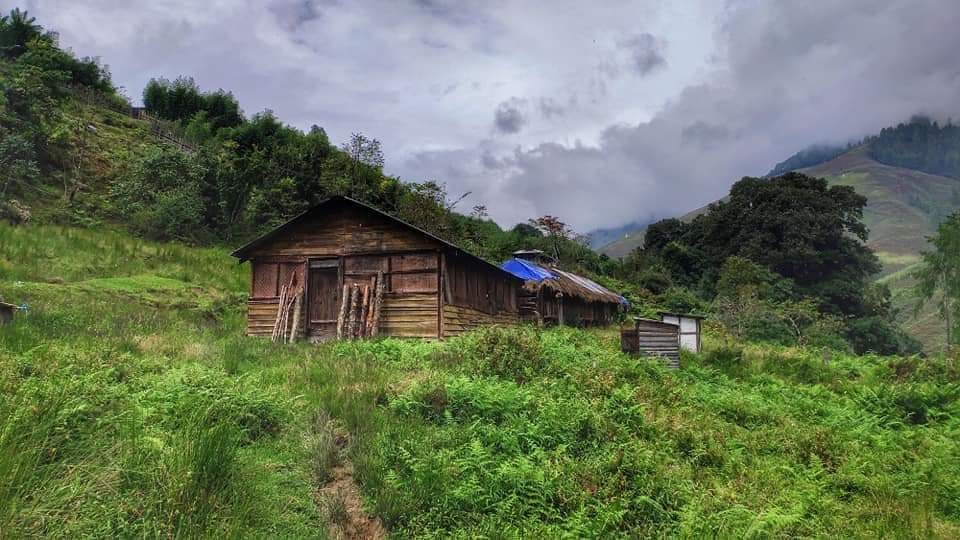
When staying in Anini and aiming to embrace the local culture, it’s essential to choose accommodations that allow you to connect with the region’s unique heritage and traditions. While Anini may not have a wide range of accommodation options, you can find guest houses and hotels that offer a genuine local experience. Here are a few suggestions for places to stay in Anini:
Government Guest Houses: Anini has government-run guest houses that are often the most reliable and readily available options for accommodation. These guest houses are typically modest in terms of amenities but offer a unique opportunity to interact with locals and experience their way of life.
Local Homestays: Consider staying in a local homestay to immerse yourself in the culture and daily life of the people of Anini. Staying with a local family provides a more authentic experience, and you can learn about their customs, cuisine, and traditions. These accommodations may be basic but are rich in local character.
Tribal Huts or Camps: Some areas around Anini may offer traditional tribal huts or camping options. These can be a fantastic way to experience the natural beauty and cultural heritage of the region. These huts and camps often have basic facilities, but the experience is unparalleled.
Heritage Resorts: While Anini is relatively remote and may not have luxury resorts, you can sometimes find heritage resorts or lodges that provide comfortable and culturally immersive stays.
Community Tourism Initiatives: Look for community-based tourism initiatives that focus on sustainable and responsible travel. These projects often offer accommodation options, guided tours, and cultural experiences that directly benefit local communities.
When booking your accommodation in Anini, it’s a good idea to communicate your desire to experience the local culture and traditions with the hosts. This can lead to more enriching interactions and experiences during your stay. Additionally, engage with the locals, participate in local activities, and explore the surroundings to fully embrace the local culture while visiting this remote and captivating region.
Anini, a Land of Dreams
As we conclude our journey through the landscapes of Anini, we hope that our vivid descriptions have transported you to this magical destination. Anini is not just a place; it’s a dreamscape where nature’s beauty knows no bounds. Whether you seek adventure, cultural immersion, or simply a moment of tranquility, Anini has it all.
From the rolling hills reminiscent of Switzerland to the turquoise Dri River and the enchanting waterfalls, Anini is a destination that leaves an indelible mark on your soul. It’s a place where time seems to stand still, and the rhythms of nature become your own. Anini is a journey worth taking, and the memories you create here will stay with you forever. So, pack your bags, set off on this mesmerizing adventure, and discover the Switzerland of the East—Anini.

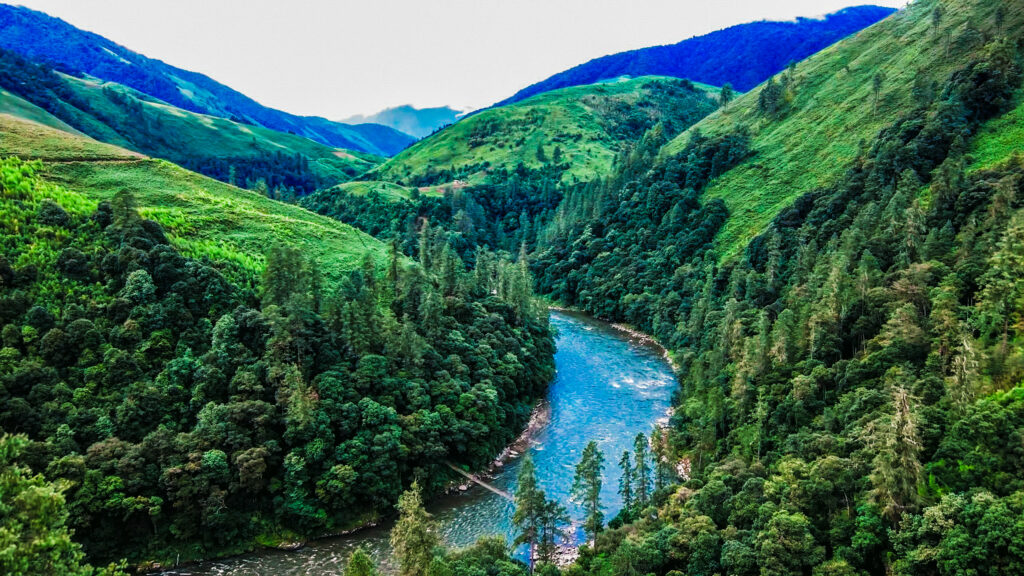
3 thoughts on “Switzerland of the East: Anini, Arunachal Pradesh – Gateway to Dibang Valley Wildlife Sanctuary”
Comments are closed.